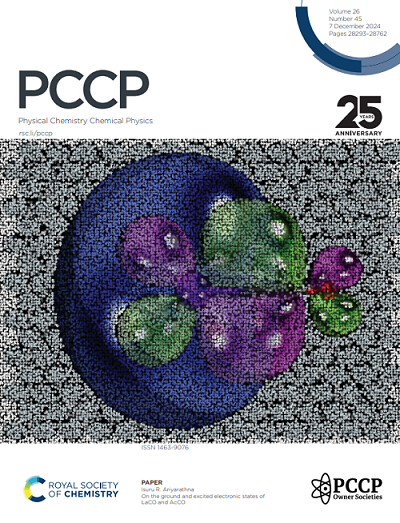Synthesis of the Biphenylene Nanoribbon by Compressing the Biphenylene under Extreme Conditions
IF 2.9
3区 化学
Q3 CHEMISTRY, PHYSICAL
引用次数: 0
Abstract
Nonbenzenoid graphenenanoribbons like biphenylene network has gained increasing attention due to its promising electronic and transport properties, but their scalable synthesis is still a huge challenge. Pressure-induced topochemical polymerization is an effective method to assemble the molecular units into extended carbon materials, and the structure and properties of the carbon material can be tuned by modifying the molecular precursors. Here, by directly compressing biphenylene at room temperature, we successfully synthesized crystalline biphenylene nanoribbon in milligram-scale. By combining the spectroscopy and single crystal X-ray diffraction methods as well as theoretical calculation, we found biphenylene experiences a minor phase transition above 3 GPa and two phenyls in biphenylene undergo sequential para-polymerization along the a-axis to form a ribbon structure at 14 GPa. Our work provides an important reference for the high-pressure reaction of aromatics and the synthesis of complex nanoribbons.求助全文
约1分钟内获得全文
求助全文
来源期刊

Physical Chemistry Chemical Physics
化学-物理:原子、分子和化学物理
CiteScore
5.50
自引率
9.10%
发文量
2675
审稿时长
2.0 months
期刊介绍:
Physical Chemistry Chemical Physics (PCCP) is an international journal co-owned by 19 physical chemistry and physics societies from around the world. This journal publishes original, cutting-edge research in physical chemistry, chemical physics and biophysical chemistry. To be suitable for publication in PCCP, articles must include significant innovation and/or insight into physical chemistry; this is the most important criterion that reviewers and Editors will judge against when evaluating submissions.
The journal has a broad scope and welcomes contributions spanning experiment, theory, computation and data science. Topical coverage includes spectroscopy, dynamics, kinetics, statistical mechanics, thermodynamics, electrochemistry, catalysis, surface science, quantum mechanics, quantum computing and machine learning. Interdisciplinary research areas such as polymers and soft matter, materials, nanoscience, energy, surfaces/interfaces, and biophysical chemistry are welcomed if they demonstrate significant innovation and/or insight into physical chemistry. Joined experimental/theoretical studies are particularly appreciated when complementary and based on up-to-date approaches.
 求助内容:
求助内容: 应助结果提醒方式:
应助结果提醒方式:


